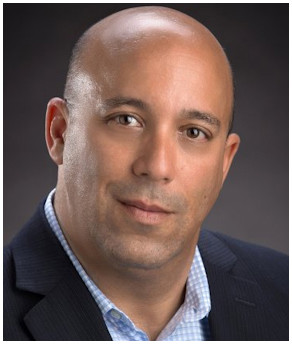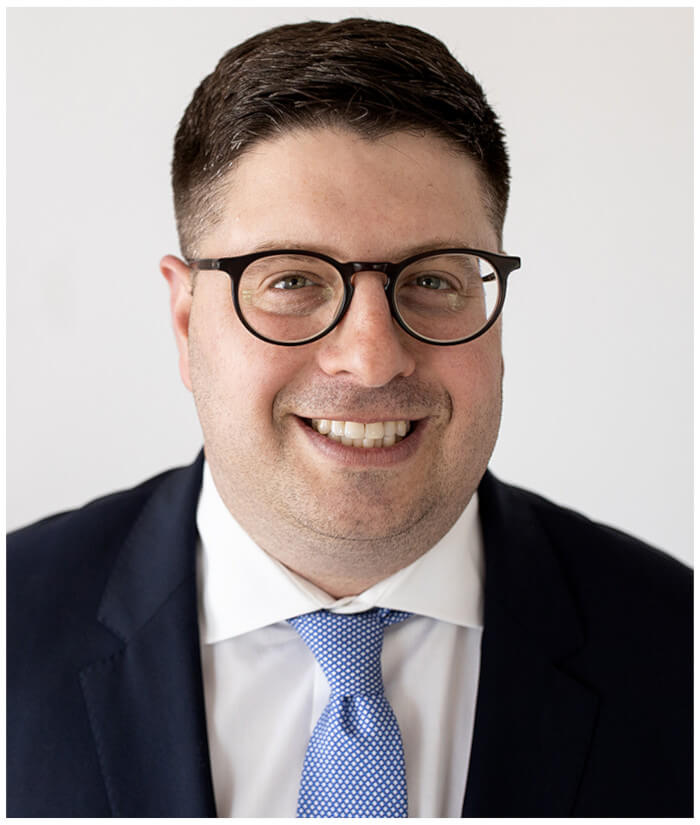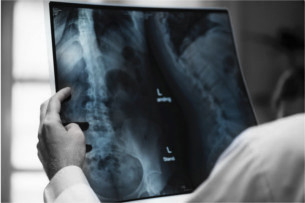Confidential seven-figure settlement: Urgent Care Medical Error results in death of Young Father and Husband
The Medical Error Case Facts
One winter morning, Bruce went to an urgent care facility in a suburb of Cleveland, Ohio. He had experienced chest pain while shoveling snow earlier that morning. The pain lasted a few minutes and then went away. Bruce experienced similar pain in the past but always attributed it to stress. Although Bruce thought the pain was probably from stress this time too, he decided to get checked out because he was scheduled to leave the country later that day on a business trip.
An EKG was done promptly upon Bruce’s arrival to the urgent care. In addition, blood tests – including a key test called a “Troponin I” test – were done. Bruce was then evaluated by an urgent care physician. The doctor felt the EKG was normal and recognized that the Troponin test, which is a marker for damage to the heart, was negative. The doctor felt Bruce was at low risk for a heart attack, but that he could benefit from a cardiac stress test. Although the doctor called two hospital-affiliated facilities to try to get Bruce in for the test before his scheduled trip, she was unable to get it scheduled. At that point, the doctor decided to seek a cardiology consult.
The doctor spoke by telephone to a cardiologist at the hospital affiliated with the urgent care center. It was agreed that Bruce would go to the hospital for further evaluation. Unfortunately, a bed was not immediately available, so Bruce waited at the urgent care center.
After about an hour, it was decided that rather than waiting at the urgent care, Bruce would go to the emergency department at the hospital’s facility in Cleveland, Ohio. He could wait there for a bed to become available in the telemetry unit. (A telemetry unit is an area of a hospital where patients can receive continuous, close monitoring of their vital signs. Specially trained nurses monitor data from sophisticated equipment that tracks blood pressure, heart rate and pulse oxygenation, among other things.) Bruce and his wife, Jill, drove from the urgent care to the hospital.
Unfortunately, on the way to the hospital, Bruce suffered a cardiac arrest. By the time he made it to the hospital, it was too late to save him.
An autopsy was performed by the Cuyahoga County Medical Examiner’s Office. Bruce’s heart was sent to an out-of-state cardiac pathology service (The Jesse Edwards Registry for Cardiovascular Disease in Minnesota) for a more detailed analysis. No specific, causative cardiac pathology was identified, though several of Bruce’s cardiac arteries were narrowed. In other words, Bruce had coronary artery disease, but no “heart attack” was discovered. Accordingly, the cause of death was listed simply as heart disease.
Building Our Medical Malpractice Case
The Eisen Law Firm began investigating this case immediately after being hired. The initial investigation centered on obtaining and reviewing all the medical records and pertinent medical literature. In terms of records, it was critical for The Eisen Law Firm to obtain not only written records, but also digitized images of the coronary pathology from the facility in Minnesota. Brian Eisen, lead attorney for The Eisen Law Firm, also gathered relevant records from Bruce’s employer.
In addition to records, Mr. Eisen gathered and reviewed dozens of primary medical journal articles on topics related to the standard of care and causation issues implicated in this matter. The Eisen Law Firm does not use paralegals or nurses for medical literature research, and although Mr. Eisen reviews textbooks, he relies mostly on the actual, published studies from primary journal articles.
Brian Eisen also consulted with six different experts in the fields of cardiology and urgent care during the initial investigation. He also interviewed representatives of the Medical Examiner’s Office and the Jesse Edwards Registry in Minnesota.
Our Medical Negligence Case: Pre-Suit Negotiations
After completing a six-month pre-suit investigation and obtaining Affidavits of Merit from experts in urgent care and cardiology, Mr. Eisen approached the hospital to explore a possible negotiated resolution. An agreement was reached to toll the applicable statute of limitations (to extend the deadline to file suit) while the hospital completed its review.
Brian Eisen and the hospital attorneys then met to discuss a potential settlement. The Eisen Law Firm took the position that Bruce should have been transferred immediately to an emergency department and not permitted to self-transport to the hospital. In addition, Mr. Eisen argued that had Bruce been in the hospital when he suffered a cardiac arrest, he likely would have been resuscitated successfully. The hospital denied both a breach in the standard of care and causation. The hospital claimed to have multiple witnesses who would testify that Bruce and his wife were fully warned about the potential consequences of driving to the hospital instead of taking an ambulance. The hospital also cited multiple articles on the subject of survival of cardiac arrest that suggest survival well below 50%, even in the hospital. The Eisen Law Firm countered with a detailed analysis of those articles, arguing that the data contained in those studies were actually beneficial to The Eisen Law Firm’s position. Mr. Eisen also provided the hospital with other, more supportive journal articles.
Ultimately, after a series of discussions and exchanges of information, the hospital made a final, confidential offer. Although other firms likely would have jumped at that offer, The Eisen Law Firm (after consulting with Bruce’s widow) rejected it and filed suit.
Our Medical Malpractice Suit: Litigation
The lawsuit was filed. The defendants included the urgent care doctor, the cardiologist, and other employees of the hospital involved in attempting to secure a telemetry bed for Bruce.
The litigation was extensive and hard fought. Discovery included standard interrogatories and requests to produce hospital policies and procedures and more unique requests, such as specific machine use reports and electronic “bed placement” records, as well as a videotaped site inspection at the urgent care center. It also included requests for taped phone calls between the urgent care doctor and the cardiologist. These tapes ultimately became key pieces of evidence in the case, as they showed the contemporaneous thought processes of the key decision makers.
The Eisen Law Firm took the depositions of all the urgent care personnel who had any interaction with Bruce or with his wife. This included the doctor at the urgent care facility, two nurses, a medical assistant, the office coordinator, and the clinical coordinator of the urgent care facility. Mr. Eisen also took the deposition of the consulting cardiologist.
The Eisen Law Firm continued to build Bruce’s case, examining more medical literature (over 50 primary journal articles) and consulting with at least 17 different experts (in urgent care, transfer center administration, hospital administration, cardiology, cardiac pathology, electrophysiology, forensic epidemiology, and economics).
In addition, Mr. Eisen prepared for and conducted two focus group sessions. The first was an electronic, online focus group, using 50 jurors from a jurisdiction with a similar jury pool to that of Cuyahoga County. The second focus group was a live, confidential focus group to whom Mr. Eisen presented actual case materials and evidence. Both groups were helpful in terms of assisting The Eisen Law Firm in identifying the strengths and weaknesses in the case.
Our Medical Error Case: Expert Witnesses
Ultimately, The Eisen Law Firm produced expert reports from five experts, one each in the fields of urgent care medicine, cardiology, transfer center administration, forensic epidemiology, and economics.
Defendants did not hold back in terms of expert identification. They identified eight liability experts: two transfer center experts, an urgent care physician, a cardiologist, an emergency medicine expert, an expert in emergency cardiovascular medicine, and an emergency medicine epidemiology and resuscitation specialist.
The Eisen Law Firm’s case centered on the decision to keep Bruce in the urgent care facility for more than an hour while waiting for a bed to open up at the hospital. The Eisen Law Firm’s experts were prepared to testify that Bruce should have been sent immediately to an emergency department for further evaluation, and that transport should have been by ambulance.
The defense and the defense experts focused on four things. First, they claimed Bruce was at very low risk for an adverse cardiac event. This is because the pain was gone, his EKG was negative, and he had very few cardiac risk factors. The defense experts applied various well-known, published cardiovascular risk assessment scores and concluded that Bruce’s risk of an adverse cardiac event was very low (on the order of one in a million). Accordingly, they concluded that it would have been within the standard of care to send Bruce home to follow up on an outpatient basis with a stress test in the next few days.
Next, the defense contended Bruce was more than adequately warned of even this remote possibility of a cardiac event. They supported this contention with witness testimony from three witnesses to the various conversations with Bruce and his wife at the urgent care center and with the contemporaneous medical records indicating that Bruce had been offered an ambulance and declined to take it. The Eisen Law Firm countered with contrary testimony. In addition, the Eisen Law Firm intended to present evidence that the key note was altered after Bruce left the facility and that no AMA form (a form used when a patient leaves a facility “Against Medical Advice”) was used.
Finally, the defense intended to rely on literature indicating that even under the best of circumstances, once a patient’s heart stops, the odds of a successful resuscitation are well below 50%. The Eisen Law Firm intended to counter with statistics of its own and with the testimony of a forensic epidemiologist, who put the odds of survival at just over 50%.
Our Medical Negligence Case: Mediation and Post-Mediation Settlement
The parties then conducted a private mediation. The Eisen Law Firm created an extensive presentation aimed at maximizing the likelihood of a mediated resolution. While the mediation was successful in narrowing the gap between offer and demand, it did not end in resolution. Over the course of the next several weeks, however, the mediator continued to press the parties on their respective settlement positions. Ultimately, the parties agreed to a confidential seven-figure settlement, well in excess of the presuit settlement offer.
After an agreement was reached, The Eisen Law Firm kept working, making sure that the settlement funds were placed into appropriate trusts for Bruce and Jill’s children. While this case might have been resolved sooner, the hard work put into the lawsuit resulted in a much more favorable resolution.




